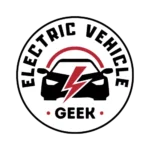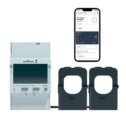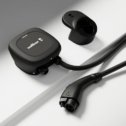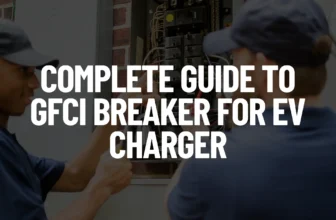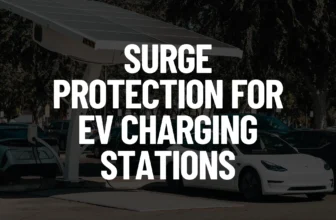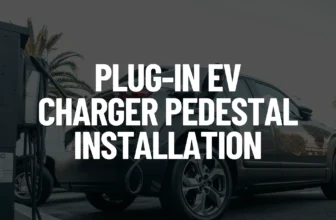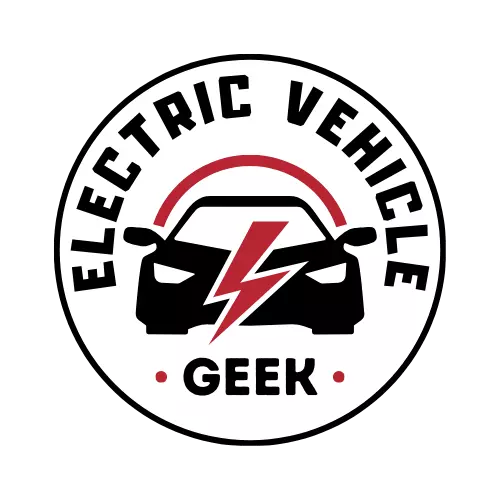Owning an electric vehicle (EV) is a great way to go green while saving on gas costs, considering using a good Level 2 charger will cost you $3-$6 for a full charge (200+ miles), which is way cheaper than gas, but did you know the average EV uses about 30 kilowatt-hours (kWh) to travel 100 miles – that’s roughly the same amount of electricity an average American home uses in a single day!
With EV sales expected to hit roughly 11% of all new car sales, that’s a lot of new energy demands on the power grid. Whether owning an electric vehicle will be an asset or a liability to you, largely depends on your home energy and electric vehicle charging management solutions – one solution being the installation of a smart meter in your EV charging electrical set-up.
An electric vehicle smart meter is similar to the traditional power meter in your home that measures and records how much energy you are using, however, a smart meter monitors your energy use in real-time, remote control, quality of power monitoring communication, and network functions, and helps you optimize charging times just like a smart EV charger.
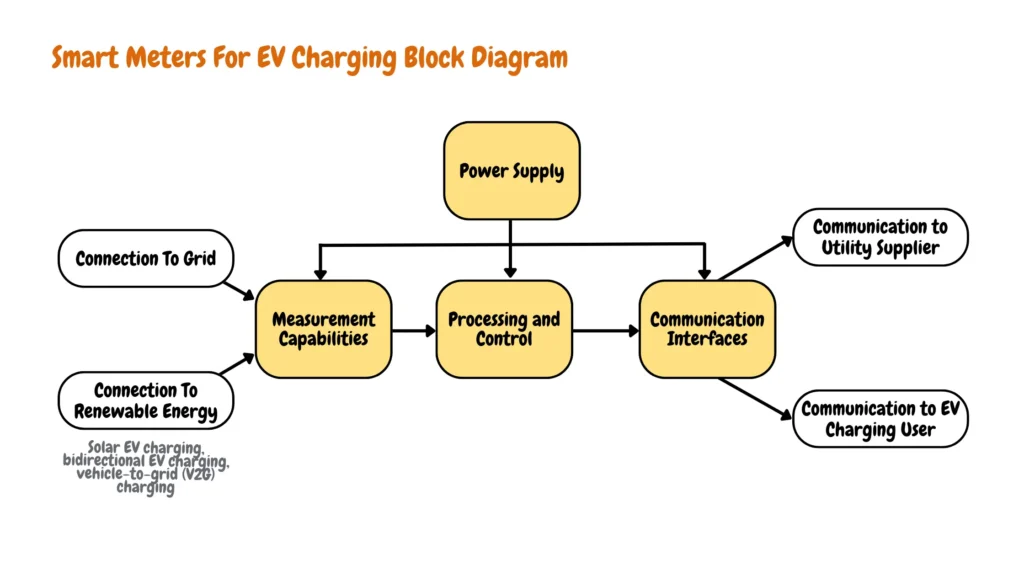
Installing a smart meter is helpful even if you have a smart Level 2 home EV charger in that it helps detect faults in your EV charging set-up quickly especially if the EV charger is faulty, and allows you to mitigate EV charging electrical faults more quickly and in time considering its estimated 3-5 electric cars catch fire while charging.
Advanced smart meters with two-way metering on the other hand can also help you manage and track your energy usage and energy production, especially for homeowners who have integrated renewable EV charging solutions such as solar EV charging, bidirectional EV charging, vehicle-to-grid (V2G) charging and also homeowners who are part of net metering ecosystem
Table of Contents
Top 5 Best Smart Meters For EV Charging.
Now that you understand why you would need a smart meter for EV charging monitoring and management, even if you have a smart home EV charger – lets get to shopping!
Wallbox Power Meter
The Wallbox Power Meter is an advanced smart meter designed specifically for EV charging energy management, optimizing home electrical loads, solar integration, and bidirectional energy control.
Wallbox Power Meter Review
When paired with a home EV charger, it dynamically adjusts charging speeds to prevent overloads by balancing grid and solar energy consumption.
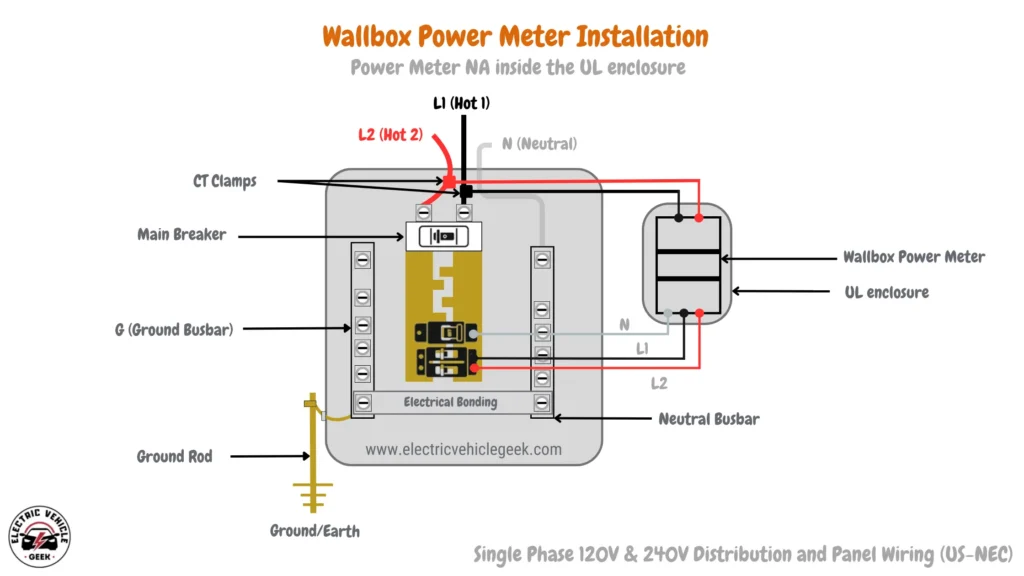
For bidirectional charging, the Wallbox Power Meter enables Vehicle-to-Home (V2H) and Vehicle-to-Grid (V2G) functionalities when paired with the Quasar 2 bidirectional EV charger, allowing homeowners to store solar energy, power their homes, or even sell energy back to the grid.
Compared to alternatives like Emporia Vue, the Wallbox Power Meter offers EV-specific smart features like dynamic load balancing and automatic solar prioritization—making it a top choice for EV owners seeking intelligent energy management.
For homeowners looking to maximize solar EV charging efficiency without overspending, integrating the Wallbox Power Meter with a Pulsar Plus charger offers a seamless, intelligent solution.
Wallbox Pulsar Plus 40-Amp EV Charger Review
Wallbox Pulsar Plus 48-Amp EV Charger Review
This combination optimizes energy distribution, enhances reliability, and reduces costs—all while leveraging Wallbox’s cohesive ecosystem for effortless integration. That’s why Wallbox EV chargers stand out among the best home solar EV charging solutions on the market.
Sense Energy Monitor
The Sense Energy Monitor is one of the top-of-the-line smart meters for EV charging we recommend if you don’t have a smart meter installed, already have a smart main meter, and would like to upgrade with a smart meter that allows you to monitor two circuits, the main panel and the subpanel (likely where you have an EV charger installed) and would like to monitor your home energy use and EV charging separately.
Comprehensive Energy Monitoring Smart Meter.
We also recommend Sense Energy Monitor if you don’t have a smart EV charger or for electric vehicle owners using a Level 1 EV charger without smart functionalities, and would like to monitor your EV charging, or have an EV charger installed on a subpanel and would like to monitor and manage the two circuits separately.
If you have a smart Level 2 EV charger, that offers you smart EV charging functions, purchasing the Sense Energy Monitor is not a waste of money, not only will it help you detect faults in your EV charging set-up when your Level 2 EV charger is failing, we do believe having a one energy monitoring dashboard allows you to easily compare your EV charging and home energy use, allowing you to optimize for the best time to each electrical accessories in your home including your EV charger.
Sense Energy Monitor will allow you to monitor how much your EV charger is using in real-time, track EV charging power usage over time, track time of use rates, set alerts when charging or when the EV charger has been on for a long time (this helps increase your EV battery life).
We installed the Sense Energy Monitor into our EV charging set-up by integrating it into our main meter, by clipping two sensor clips into the mains that connect the electrical panel to the grid as shown in our wiring diagram.
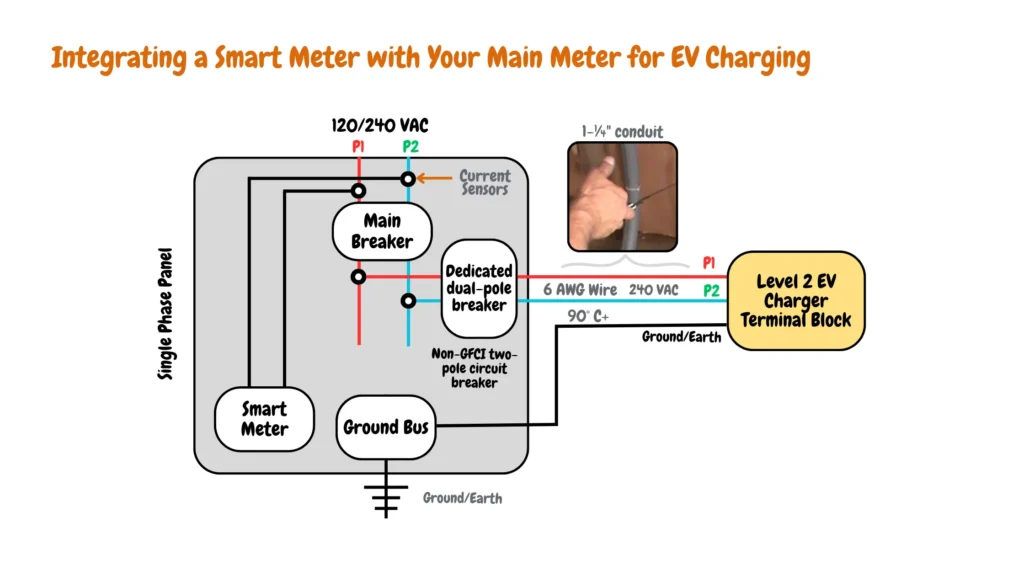
Thinking of tracking your EV charger’s energy use separately?
Here’s the trick: If your EV charger is on a subpanel, you can clamp the Sense Energy Monitor’s current sensors around the main wires feeding that subpanel.
Best Smart Meters For EV Charging With Solar.
We also recommend Sense Energy Monitor with Solar for electric vehicle owners who have integrated renewable energy into their EV charging set-up, a specialized Sense Energy Monitor (link below) will allow you to track your EV charging electricity use, and also your renewable energy production in real-time, allowing your to compare your electrical use and energy production.
We installed the Sense Energy Monitor with Solar Monitor in our Solar powered Enphase IQ 50 EV Charger installation, as shown in the circuit diagram on how we integrated smart metering for EV charging and solar monitoring.
In our Solar-powered Enphase EV charging set-up, we use a Sense Energy Monitor with Solar Monitor to track both the electricity our solar panels generate and how much our Enphase IQ 50 EV charger uses. You can see how it all works together in the circuit diagram we have for this setup.
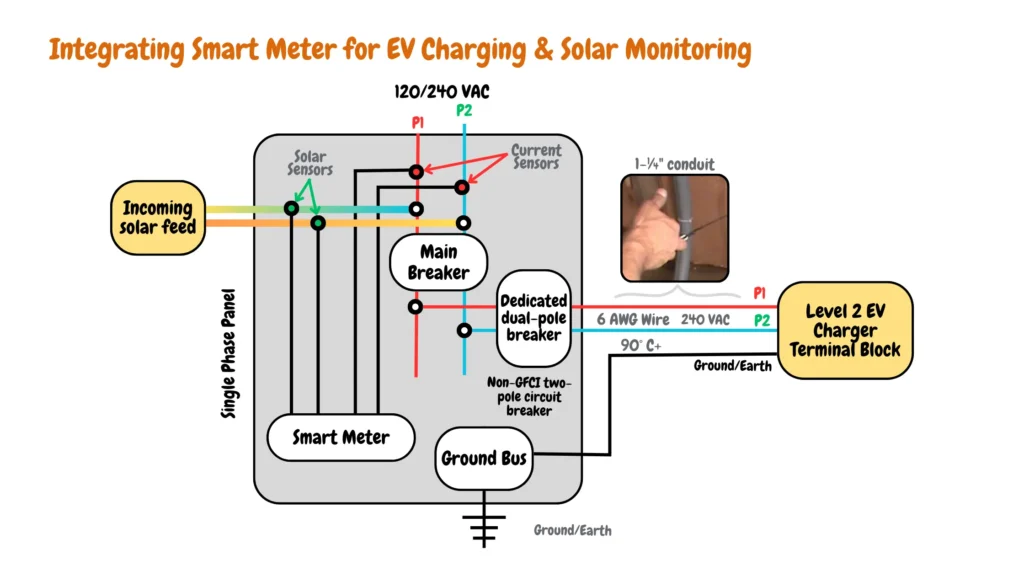
By Integrating Smart Meter for EV Charging & Solar Monitoring using the Sensei Energy Monitor we were able to monitor EV charging energy powered by solar in percentage form, real-time energy production from our EV charger solar set-up, and also track how much our 10kW SunPower Solar panel is producing, how much our Enphase EV charger is consuming and how much energy we can store in our solar energy storage system or power other electrical appliances in our home.
Emporia Vue Energy Monitor
We recommend Emporia Vue Energy Monitor for budget-conscious EV owners looking for a smart meter for their EV charging, especially if they have multiple EV chargers (Also multiple dwelling EV charger installations) or if the homeowner has multiple electrical components that need monitoring including EV charging.
Best Smart Meter For Multiple EV Chargers
We recommend the Emporia Vue Energy Monitor because it is a low-priced EV charging-optimized smart meter that has similar features to high-priced smart meters. you will find features such as solar EV charging monitoring, bidirectional EV charging monitoring, and many other smart EV charging features.
The installation of the Emporia Vue Energy Monitor is similar to installing the Sense Energy Monitor, however we recommend making sure the current clamps are properly installed, by aligning the imprints K-L found in the bottom of the current sensors towards the main breaker as shown in the circuit diagram below.
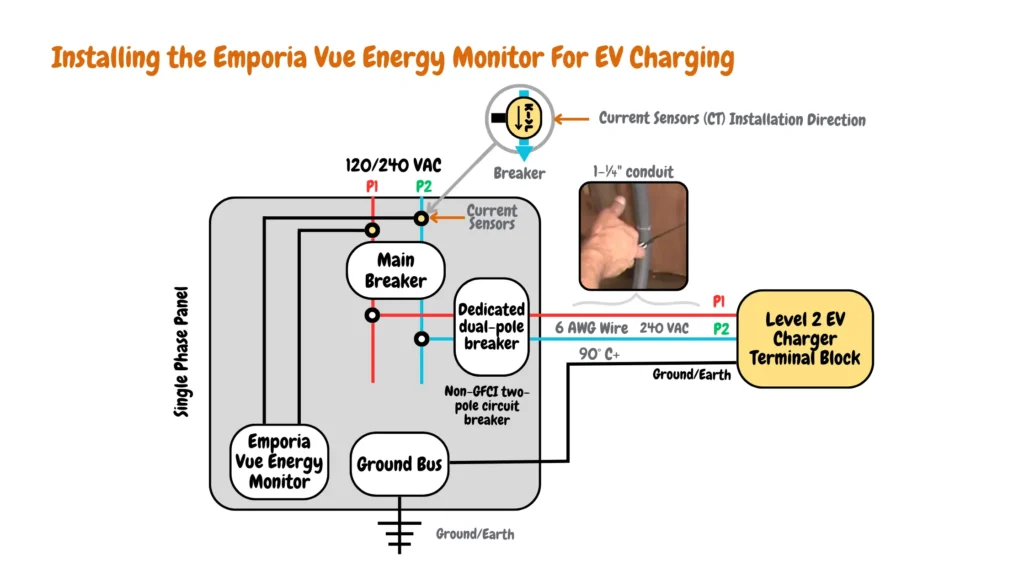
There are two ways to install the current transformers of the Emporia Vue Energy Monitor in a multiple EV charging environment, You would use one CT for each hot wire coming out of the breaker (two for a 2-pole breaker) (This is recommended for balanced loads like EV chargers), you can also use one CT clamped around either of the hot wires coming out of the breaker. This simplifies installation but requires using a “circuit multiplier” setting in the smart meter app. This is a setting that tells the app to multiply the CT reading by a factor (2 or 3 for a 2-pole or 3-pole breaker).
We don’t recommend using multipliers for submetering EV chargers, This is because multipliers assume a balanced load (equal current on both hot wires), which isn’t always true for subpanels feeding multiple circuits. Inaccurate readings from a single CT with a multiplier can distort overall EV charger energy consumption data. For submeters, using one CT per hot wire is the best approach for accurate results.
Efergy Smart Energy Monitor
We recommend both Efergy E-Max Energy Monitor and Efergy Elite-Max Energy Monitor to homeowners who have EV chargers installed in their homes and don’t have internet coverage, especially those who live off the grid and are using renewable energy such as solar EV charging.
Unlike Emporia and Sense Energy monitors that require the use of web applications or cloud solutions, Efergy E-Max Energy Monitor includes a portable 7.9-inch external display which allows you to be internet connection free and also phone free.
If you want to use the internet or your phone with the Efergy E-Max Energy Monitor you would need to add an Efergy Engage Hub Solo that integrates internet connectivity to the Efergy smart meters ecosystem allowing you to track your electricity production and usage from anywhere through its web, android and iOS Apps.
We recommend the Efergy Engage Hub Solo for homeowners whose EV chargers are on the main meter but submetered, however, you will need the Engage Sub-metering Kit that will allow you to gain a clearer picture of your EV’s energy consumption, helping you optimize charging times and potentially save money on electricity bills (especially if you have time-of-use rates).
The Efergy Engage Hub Solo will help you reveal usage patterns, like how much energy your EV uses for short trips compared to long ones, and also help you isolate issues if you suspect a problem with your EV charger. adding additional accessories such as Efergy Engage Hub Solo allows remote energy monitoring allowing you to monitor and track your EV charging remotely, adding accessories such as Engage Sub-metering Kit allows the Efergy Engage Hub Solo to be used for more advanced energy monitoring such as solar production monitoring and multiple EV charger installations especially those installed in a submetered installation.
Best smart meter for three-phase EV charging.
If you are one of the electric vehicle owners with a three-phase EV charger installation and would like to integrate smart metering into your home electrical system that includes your EV charging set-up we recommend the Efergy E-Max Energy Monitor whose installation is optimized for three-phase installations.
Best EV Charging Smart Meter With External Monitor.
If you are on single phase EV charger installation, and would like to enjoy using an external monitor to monitor and manage your home and EV charging energy, we recommend the Efergy Elite-Max Energy Monitor that includes a 7.9 inches external display.
Eyedro Smart Monitor.
The Eyedro Smart Monitor is ideal for homeowners looking for a smart meter that offers grid EV charging and Solar EV charging monitoring and offers electrical energy monitoring and tracking tools ideal for EV charging applications such as real-time EV charging energy usage, remote EV charging monitoring, bi-direction EV charging monitoring, and multiple EV chargers monitoring.
Best EV Charging Management Smart Meter
For Homeowners who have connected their EV chargers to the grid system and their renewable energy, you will need to install a second Eyedro Smart Monitor to monitor both your Solar energy production and grid EV charging usage, the Eyedro Smart Monitor can also be used for Net metering applications to track electricity use in real-time and can communicate data back to the utility company especially if you have integrated renewable energy EV charging and participating in net metering programs. This is crucial for net metering as it allows for accurate measurement of both electricity used from the grid and electricity fed back to the grid.
The Eyedro Smart Monitor is one of the best EV charging management smart meters in that it allows you to set your energy goals, you set how much you intend to use on EV charging bills each month, and later match your actual EV charging bills to the goals you set to see how much you’ve saved, you can use its energy monitoring features such as daily insights, weekly, monthly and yearly reports to optimize your EV charging.
Best Smart Meter for Multiple EV Chargers.
For Homeowners with multiple EV chargers, businesses with multiple EV chargers, or multiple residential EV charger installations, we recommend the Eyedro Business 3-Phase Energy & Solar Monitor which offers both wifi and ethernet connection options.
We recommend the Eyedro Business 3-Phase Energy & Solar Monitor, especially for homeowners with three-phase EV charger installations, and multiple EV chargers especially those renting out their EV charging stations, the Eyedro Business 3-Phase Energy & Solar Monitor gives EV charging stations investors the ability to monitor and track energy usage across their multiple EV charger installations and Supports fixed, tiered, and time-of-use rate structures.
Aeotec Home Energy Meter
For EV owners looking for a smart meter that allows them to to integrate their home EV charger into a large smart home system, we recommend the Aeotec Home Energy Smart Meter which integrates with a lot of smart home ecosystems such as SmartThings, Indigo 7, Home Seer, Vera, Open Z-Wave, Open HUB, Zipabox, Qolsys IQ Panel, Home Assistant and more.
Aeotec Home Energy Smart Meter allows your EV charger to become part of a more sophisticated smart home ecosystem, offering potential benefits for convenience, monitoring, and potentially even cost savings.
The Aeotec Home Energy Meter packs a punch and uses Z-Wave compatibility that easily integrates your EV charger to a large smart home system where you can track your EV charging status and energy consumption through your existing smart home app, it also makes it easier for you to schedule your EV charging times to take advantage of off-peak electricity rates or integrate with your solar power generation. Depending on your hub, you might be able to control your EV charger with voice commands through assistants like Alexa or Google Assistant.
Conclusion.
So there you have it! These 5 affordable smart meters for EV charging are all fantastic choices for taking control of your EV charging use and minimizing your EV charging monthly bills. We’ve done the legwork to pick the best options, keeping affordability in mind.
Before you click “buy,” remember these key points:
- Installation: Review online descriptions carefully to see if the meter is self-installable or requires professional help.
- Compatibility: Double-check that the meter works with your existing electrical EV charging setup.
- Data Access: Consider how you want to access and analyze the EV charging reports the smart meter generates (app, website, etc.).
- Research: Read customer reviews especially those using the smart meters with their EV chargers, FAQs, and don’t hesitate to ask the manufacturer any lingering questions.
Finally, as your smart meter starts collecting data and reveals areas for improvement, consider using those savings to upgrade to energy-efficient energy sources such as solar EV charging, and smart EV chargers. By taking these steps, you’ll be well on your way to a smarter, greener, and more cost-effective home EV charging experience.

James Ndungu is a certified EV charger installer with over five years of experience in EVSE selection, permitting, and installation. He holds advanced credentials, including certification from the Electric Vehicle Infrastructure Training Program (EVITP) and specialized training in EV charging equipment and installation, as well as diplomas in EV Technology and Engineering Fundamentals of EVs. Since 2021, James has tested dozens of EV chargers and accessories, sharing expert insights into the latest EV charging technologies.
Last update on 2025-12-25 / Affiliate links / Images from Amazon Product Advertising API
